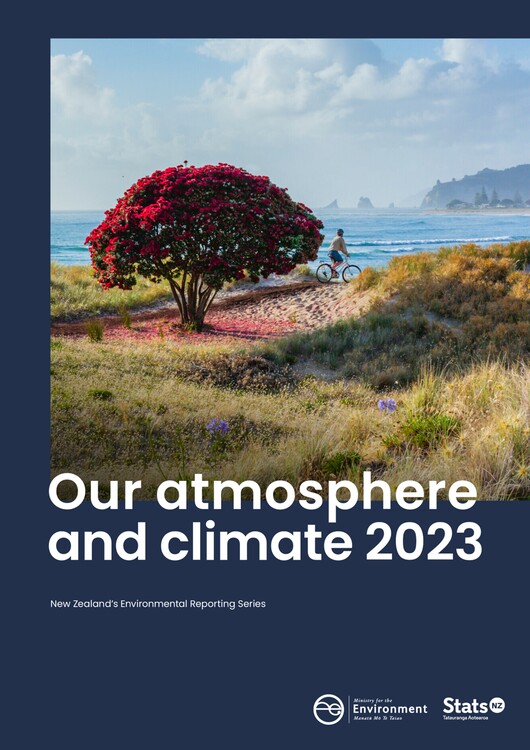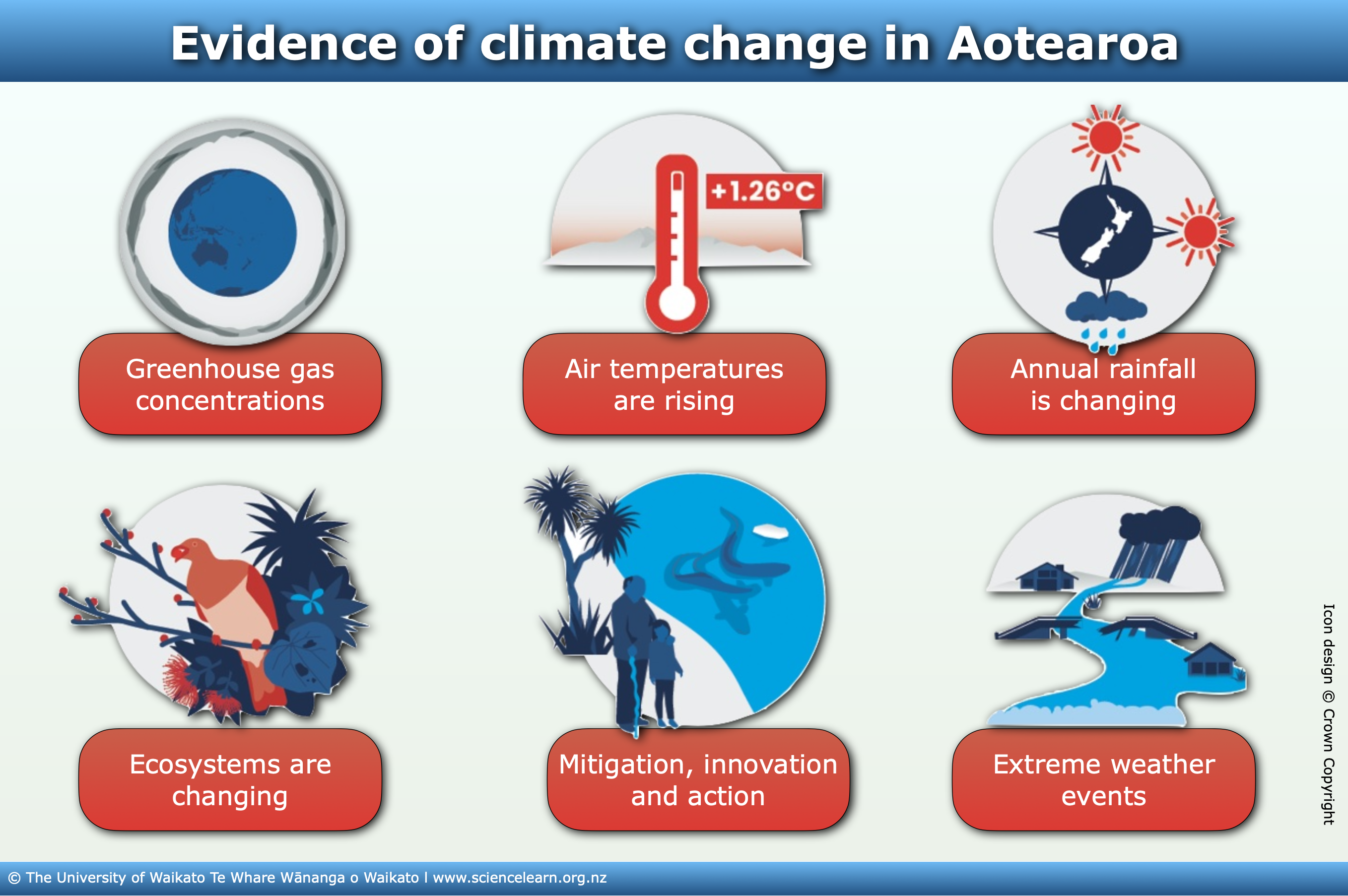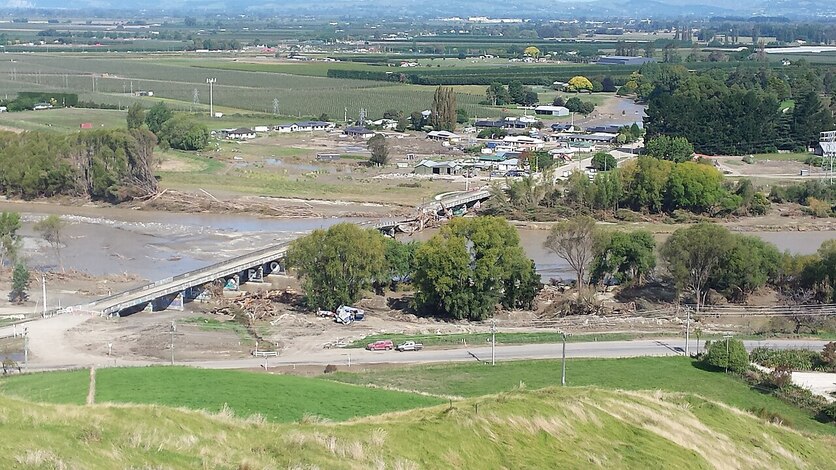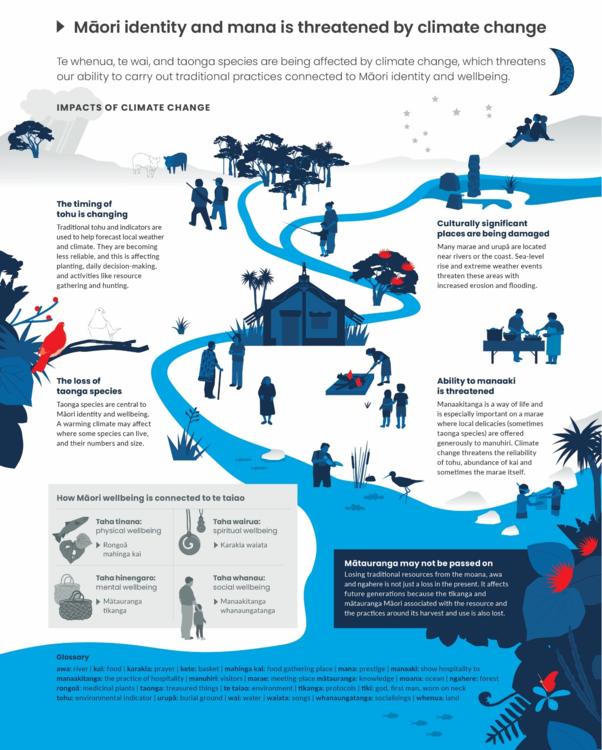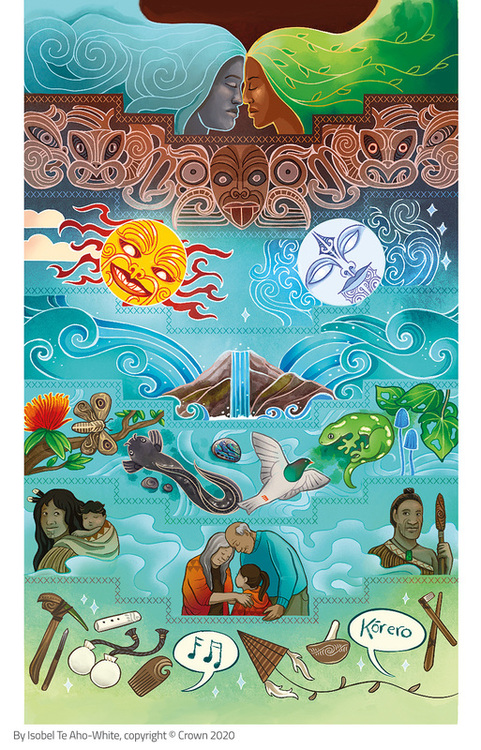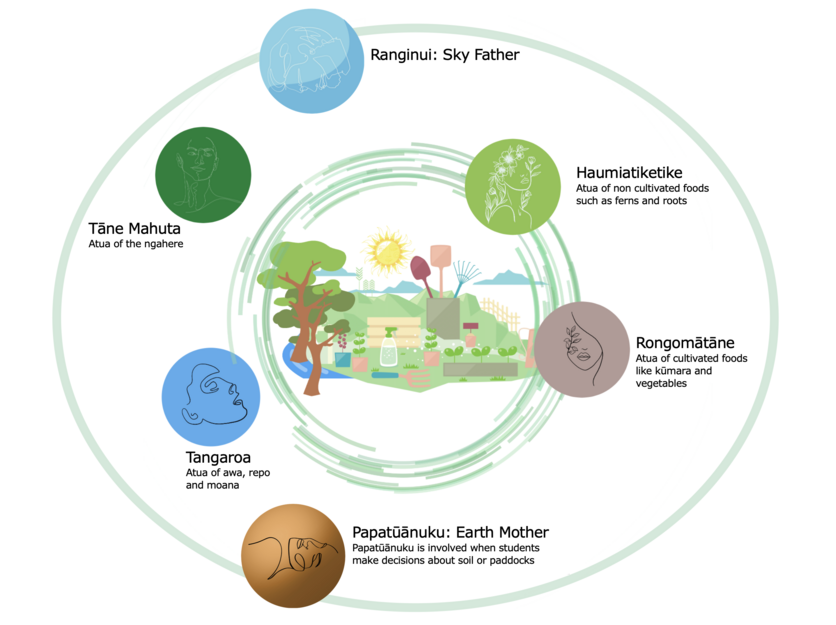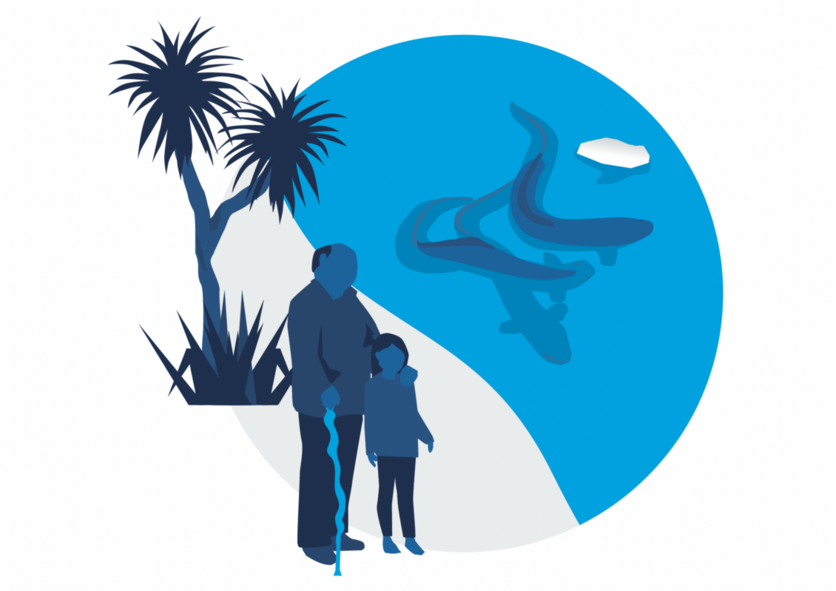Our atmosphere and climate 2023 – an environmental report produced by the Ministry for the Environment and Stats NZ – begins with this whakatauākī:
Tiakina te kura tū te whiwhianuku, te kura tū te whiwhiarangi, kei roku te taiao.
Protect the sacred knowledge systems of above and below, to prevent environmental decline.
Elisha Rolleston, in Our atmosphere and climate 2023
The whakatauākī reflects the intrinsic connection of Māori knowledge to te taiao. Māori knowledge here is referred to as kura, known to many as the traditional way of referring to mātauranga Māori. It is reflecting the sacredness of knowledge as it pertains to te taiao and the ability for the Māori world view and concepts to contribute to and adapt to the effects of climate change.
Investigate a Māori insight – māramatanga Māori – regarding our climate and atmosphere.
Building resilience and creating change requires individual and collective action. Information provided by scientific sources like the Ministry for the Environment and Stats NZ environmental reporting combined with indigenous knowledge helps us make informed decisions to create this change.
Continuing an educational collaboration
The Hub teamed up with the Ministry for the Environment and Stats NZ to create a suite of resources based on their 2020 report – with a focus on science and communicating the issues Aotearoa New Zealand faces due to a changing climate. We’re continuing this collaboration with the 2023 report. This time, our focus reflects the report’s themes of interconnectedness between systems and people and the impacts of climate change on biodiversity and ecosystems.
Using evidence to assess what may happen
Our atmosphere and climate 2023 is information oriented. It examines the most up-to-date environmental indicators and recent scientific evidence regarding the changing state of the atmosphere and climate. The report intentionally expands the integration of te ao Māori and mātauranga Māori, as well as Māori research and evidence.
For the first time, the report uses the growing body of both quantitative and qualitative evidence to provide outlooks – descriptions of how the environment may change in future. The report assesses whether there is high or moderate confidence in the environmental and social changes taking place. It discusses the reasoning that underpins the outlook statements and provides references to data sources.
With reasonable certainty (high confidence), the report notes:
- extreme weather events will become increasingly frequent and severe, leaving less time for recovery between events
- changes in our atmosphere and climate will have significant and enduring impacts on all other environmental domains
- climate change will increasingly threaten our unique taonga species and rare ecosystems
- climate change will increase the risk of introduction of new pests and diseases with significant impacts for our biodiversity, food security, health and overall wellbeing.
With some certainty (moderate confidence), the report notes:
- climate change will affect the frequency, severity and spatial patterns of severe rainfall and drought, and these events will have negative impacts on our primary industries
- climate-related impacts will disrupt the transmission of location-specific mātauranga Māori and tikanga practices – however, the report also acknowledges the adaptability of indigenous knowledge.
It’s not all bad news. There’s moderate confidence that Aotearoa New Zealand’s short to medium-term anthropogenic greenhouse gas emissions are likely to decline. However, it should be noted that emissions are not declining as rapidly as needed.
The report notes that, even in an information-rich environment, there will always be uncertainty about the future, so the assessments should not be read as statements of fact but as predictions of what may occur based on what we know now. Human intervention – for example, emissions reduction and biosecurity responses – will have an impact on some of the outcomes!
Nature of science
The data used in Our atmosphere and climate 2023 comes from many sources, including central and local government and Crown research institutes. Further supporting information is provided using a ‘body of evidence’ approach. This body of evidence includes peer-reviewed published literature as well as mātauranga Māori and observational tools used to identify changes in our atmosphere and climate environment.
Te ao Māori, whakapapa and our connection to the atmosphere and climate
Te ao Māori and mātauranga Māori represent a valuable record of our environment that is unique to Aotearoa. It encapsulates a holistic view that acknowledges the intrinsic connection between the atmosphere, climate and the entire environmental system. It recognises the interdependencies and interrelatedness of things, including between people and their environment.
Whakarongo ki te taiao – listen to the environment.
The changing state of our atmosphere and climate can be observed through changes in ngā tohu o te taiao. Through observing the environment closely over time, Māori developed a deep knowledge of location-specific environmental indicators, or tohu, which help to monitor and forecast trends in te taiao. Hapū and iwi have developed their own rohe-specific maramataka through close interactions with their local environments and processes. This knowledge provides information about the climate of Aotearoa before the arrival of European settlers that is difficult to ascertain with science alone.
Building resilience and creating change
The indicators and outcomes discussed in Our atmosphere and climate 2023 clearly outline the pressures we’ve placed on te taiao. In the months prior to the report’s release, severe weather events devastated several regions in Aotearoa. We’ve clearly seen that we are part of the environment rather than being separate from it.
Human intervention and adaptation can create change. We do not have to be passive victims of climate change. Many Māori communities are using proven and sustainable methods based on mātauranga and values such as active kaitiakitanga to adapt and create Māori-led action on climate change. Technological advances like MethaneSAT and innovative practices in primary production can help us reduce greenhouse gas emissions.
Building resilience and creating change requires individual and collective action. Information provided by scientific sources like the Ministry for the Environment and Stats NZ environmental reporting combined with indigenous knowledge helps us make informed decisions to create this change.
Activity idea
Our climate, our biodiversity, our future is an interactive storymap that uses a collection of stories arranged to show the interconnection of ki uta ki tai – mountains to the sea – which illustrate how the climate is changing, how it impacts our indigenous biodiversity and what is being done to help. This activity helps educators deepen student engagement with the storymap.
Related content
Investigate a Māori insight – māramatanga Māori – regarding our climate and atmosphere.
Professional development resources:
- Climate change – classroom competencies has suggestions for developing student competencies and working towards climate solutions.
- Climate change resources – planning pathways provides pedagogical advice and links to the New Zealand Curriculum. It includes an interactive planner that groups Hub resources into key science and teaching concepts.
- Climate change – a wicked problem for classroom inquiry offers ideas on how to use an inquiry approach when teaching about climate change.
- Thin Ice in the classroom curates climate change resources and provides curriculum information.
Climate change resource curations:
- Our atmosphere and climate – introduction curates a suite of resources developed in collaboration with the Ministry for the Environment and Stats NZ. Resources highlight climate connections and implications for Aotearoa and for Māori. They have a strong focus on evidence and data.
- Our atmosphere and climate 2020 – a collection focusing on the 2020 report.
- Climate change – a collection with a focus on the science of climate change and associated socio-scientific issues, including melting ice and sea-level rise.
- Climate change (HoS) supports the House of Science Climate Change resource kit but it is also useful for anyone exploring what is climate change, ocean acidification, sea and land water, how climate change affects Māori, the Earth’s interacting systems and ideas to tackle these wicked problems in the classroom.
See our Pinterest Board featuring our collaborations with the Ministry for the Environment and Stats NZ – wrapping educational resources around the state of environment reports.
Useful links
Stats NZ and the Ministry for the Environment report on the state of different aspects of the environment every 6 months and the environment as a whole every 3 years. Find their reports here.
Acknowledgement
This resource has been produced with the support of the Ministry for the Environment and Stats NZ. © Crown copyright.
